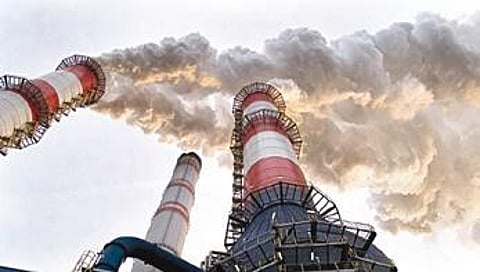

HYDERABAD: Monitoring is essential to assess pollution levels against ambient air quality standards. However, many experts have pointed out gaps in air quality monitoring in India. According to recent research conducted by Urban Emissions, the recommended number of monitoring stations in Telangana is around 97, estimated using CPCB’s thumb rules. However, the State only has 25 manual air monitoring stations and 14 continuous air monitoring stations as of February 2023.
The National Clean Air Programme (NCAP), was launched in 2019 to develop clean air action plans for 131 non-attainment cities, including four cities in Telangana -- Hyderabad, Patancheru, Sangareddy, and Nalgonda. In 2020, the National Environmental Engineering Research Institute (NEERI) and the Environment Protection Training and Research Institute (EPTRI) initiated a study on planned and proposed source apportionment studies planned under NCAP.
Initially, the NCAP programme required these cities to prepare action plans to reduce PM pollution levels by 20-30% by 2024 relative to 2017 levels. In 2022, the target was revised to reduce PM pollution levels by 40% by 2026.
The study emphasises that strengthening the ambient air monitoring network is necessary to obtain accurate data and understand the sources contributing to the problem, as well as effectively track the progress made in the cities for better air quality. Sai Bhaskar Reddy Nakka, an International Environment and Development professional, said that monitoring air quality at different stations is crucial since it is highly variable in terms of both time and place.
However, most monitors installed by CPCB and TSPCB are fixed in spots that do not reflect the actual pollution levels in the city. Nakka recommended installing monitoring devices and sensors in areas of frequent human activity, such as schools, grama panchayats, and other common places, to better monitor and manage air pollution while also making people aware of the environment they live in.
He emphasised that everyone should have access to clean air since breathing is a fundamental necessity of existence. Therefore, authorities have a responsibility to focus on the flaws in the management of air quality. Rising global temperatures make the air drier, release greenhouse gases, and carcinogenic agents, making air pollution worse. Hence, better monitoring and management are vital to achieving the NCAP’s set goal, Nakka said.
Talking health
National Clean Air Programme was launched in 2019 to develop clean air action plans for 131
non-attainment cities, including four cities in Telangana -- Hyderabad, Patancheru, Sangareddy, and Nalgonda
In 2022, the target was revised to reduce PM pollution levels by 40% by 2026.
Most monitors installed by CPCB and TSPCB are fixed in spots that do not reflect the actual pollution levels